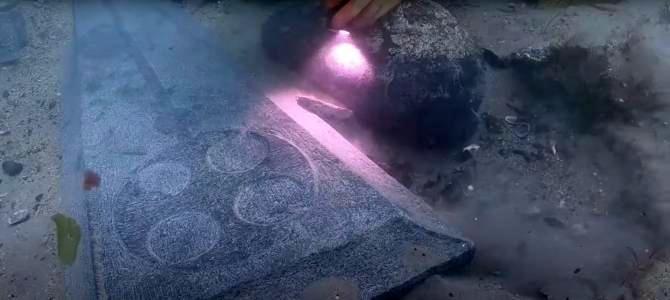 Over 750 years ago, a medieval ship loaded with a cargo of limestone, carved gravestones, and mortars for grinding, sank off the Dorset coast a mile away from the nearest harbor. Now the so-called Mortar Wreck has been granted the highest level of protection on the advice of Historic England.
Over 750 years ago, a medieval ship loaded with a cargo of limestone, carved gravestones, and mortars for grinding, sank off the Dorset coast a mile away from the nearest harbor. Now the so-called Mortar Wreck has been granted the highest level of protection on the advice of Historic England.
The 13th-century wreck, discovered in Poole Bay in Dorset, is the oldest known protected wreck in English waters where hull remains can be seen. Tree ring dating of the wreck indicates that the timbers used to construct the hull are from Irish oak trees, felled between 1242-1265, during the reign of King Henry III.
Historic England notes that the survival of 13th-century vessels is extremely rare, and prior to this discovery, there are no known wrecks of seagoing ships from the 11th to the 14th century in English waters. The wreck was discovered by Trevor Small who has operated diving charters from Poole in Dorset for the past 30 years.
Maritime Archaeologist, Tom Cousins who is part of the team at Bournemouth University assigned to uncover and preserve the wreck said: “Very few 750-year-old ships remain for us to be able to see today and so we are extremely lucky to have discovered an example as rare as this, and in such good condition. A combination of low-oxygenated water, sand and stones has helped preserve one side of the ship, and the hull is clearly visible.”
The vessel is clinker-built, made from overlapping planks of wood and was carrying a cargo of Purbeck stone. The shipwreck is referred to as the ‘Mortar Wreck,’ since much of the cargo contained within the wreck also includes several Purbeck stone mortars, which are large stones used by mills to grind grains into flour.
Purbeck stone is a form of limestone made from densely packed shells of freshwater snails. Quarried on the Isle of Purbeck on the south coast of England, the stone is also referred to as Purbeck marble, due to its ability to be highly polished. Purbeck marble is used in Gothic architecture across Britain and the continent.
Other items found in the wreck include a cauldron used to cook food in, which would have been placed directly onto a fire.
Two Purbeck marble gravestone slabs were also found in the wreck in remarkably good condition. Purbeck marble gravestone slabs were widely used across the south of England and were exported to Ireland and the continent. One of the slabs features a wheel-headed cross, an early 13th-century style, while the other features a splayed arm cross, common in the mid-13th century.
Bournemouth University uncovers earliest English medieval shipwreck

I am surprised that anything on the seabed in Poole Bay hasn’t been torn apart by yacht anchors over the years. The only place where that is unlikely to happen is in the shipping channel but then it would have been torn apart by dredgers,
The EU would most probably direct funds to preserve heritage. Oh wait, forget that!